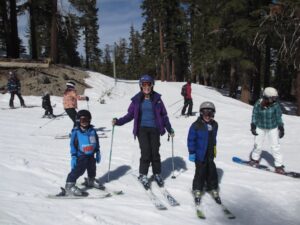Summer Safety Quiz
Sunscreen is safe for infants.
True. Sunscreen can and should be applied to any exposed skin of any age. Of course, it’s best to avoid the sun, especially during peak sun hours, cover your little one up with a hat, SPF clothing and use a sun shade on your stroller. You can also wash sun protection into your child’s clothing with a product like Sun Guard Wash-in Protection. It gives clothing a protective factor of 30 for up to 20 washes.
To protect your skin, use as high of an SPF as you can find.
False. The difference in sunburn protection between SPF 30 and SPF 100 is not that great, but higher SPF products may better protect against long-term skin damage and skin cancers. What’s more important than the number is that you reapply often and use enough.
The FDA is changing sunscreen guidelines so next year 50 + will be the highest number, sunscreen won’t be labeled sweat proof or waterproof, since that is virtually impossible anyway. Instead it will be tested to see how long it is “water resistant.” 40 minutes is water resistant and 80 minutes is very water resistant. And labels must say broad spectrum or UVA and UVB to be effective in preventing skin cancer.
When choosing sunscreen, I recommend SPF of at least 30, broad spectrum, water resistant, make sure you use lots and reapply.
15 minutes of sun a day is good for your body for vitamin D.
False. There is no safe amount of unprotected sun exposure, due to risk of skin cancer. Medical organizations including the AAP and American Academy of Dermatology recommend that you obtain vitamin D from a healthy diet that includes food naturally rich in vitamin D, foods and beverages fortified with vitamin D, and dietary supplements. I recommend that all of my patients protect themselves from the sun and take a daily vitamin with Vitamin D.
The first thing to do for a rattlesnake bite is to try to suck the venom out.
False. Don’t try to suck the venom out and don’t tie a tourniquet around the area. What to do…Call 911 from a landline if possible, keep victim calm and get to a hospital right away for antivenim. A good friend and patient of mine was bitten by a rattlesnake a few weeks ago in his own backyard. It was scary, he was in the ICU for several days and luckily he is now fine. To prevent snakes in your area, clear away any brush or fields of wild flowers. Consider installing a snake fence around the perimeter of your yard. When at a park or hiking, don’t let your kids wander into areas of brush or shrubbery and stay on the path while hiking. A rattlesnake can bite more than once, so don’t try to kill the snake yourself.
Poison Oak rash is not contagious.
True. Poison oak rash cannot be spread or caught from a family member or friend, even if you directly touch the rash or the blisters. The rash, which can be miserably itchy, is a reaction to the oil found in the plant, so you have to touch the plant itself, or get the oil on your skin.
If you touch poison oak, wash your skin as quickly as possible with cold water. The rash can take a day to a week to present, but if it is severe or you have any swelling or spreading redness or pus, seek medical attention.
Cover up with long socks and pants when hiking and there are products available such as Ivy block that can help prevent poison oak.
The best thing you can do to prevent drowning is to install a pool fence.
True. The best thing to prevent drowning is to completely surround your pool with a 4 sided pool fence, with a self closing, self latching gate–this alone cuts drowning risk in half. Teaching kids to swim is also very important and you can start swim lessons between age 1 and 4 when your child is ready. In addition, children should be constantly supervised by an adult who knows how to swim, perform a rescue, initiate CPR and call for help. For young children, use “touch supervision” which means an adult is always within arm’s reach.




